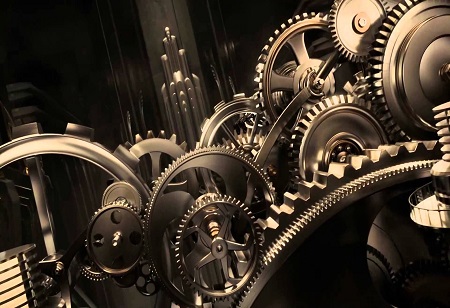Right from the inconspicuous wheel to the roaring internal combustion engine of a machine or vehicle,
mechanical engineering services play an important role in the daily life of humans. It calculates how the conversion of energy, environmental factors, materials used, internal and external forces, and the product manufacturing process all affect the final product and parts in terms of durability, mobility, and functionality. Also, with the rapid rise in Industry 4.0, digitization has made its way inside the
mechanical engineering sector. A recent study found that the mechanical engineering services market is growing at an average annual rate of about 8-9 percent. Mechanical engineering services show an inclination towards integration with innovative informational technologies.
In this article, let’s have a look at some of the latest trends and practices in Mechanical Engineering Services that are reshaping the industry.
Designing a Rough Sketch of the Project Model
The first and foremost trend usually followed by engineers is to make a rough sketch of the model. They follow an iterative and creative design process to visually communicate each of the inventor’s product features inside their overall visual design of the product as a whole. Together with the design and engineering teams involved in the process, experts evaluate these individual parts and the overall design theme to ensure the user experience, functionality, and aesthetics are aligned. Industry experts consider this sketch phase, although rough, to be a very powerful way of bringing together a number of highly intelligent minds to find the best draft solution for a product.
“The primary application of mechanical design codes is to calculate the stresses imposed by the loads applied to the various assembly components during normal operation, anticipated operational occurrences, and accidents”, says Anand Mahindra, CEO of Mahindra Group. There are other uses as well which include vibrational mode and harmonic response analysis and buckling assessments.
Refined Invention Sketch
Once the rough sketch is complete, the refined
product sketch phase puts together all of the pieces and the overall design language into one product sketch. This allows the designer, engineering team, and lastly the inventor from time to time to deeply reflect on the product as a whole and make any final edits or adjustments before going into the next CAD design phase. Since edits are relatively quick in the sketching phase, it is best to use these phases to make any adjustments before getting into the heavy lifting work of subsequent CAD design, engineering, and prototyping phases.
Computer-Aided Design
CAD also known as Computer-Aided Design is referring to the refined sketch and then using state-of- the-art 3D CAD software to build the initial conceptual design of the product. Even though this is just conceptual at this point, mechanical engineers start the building of these models with full manufacturing grade top-of-the-line software such as Fusion360 or Solidworks Premier. This process requires much more technical expertise as it can make the design and engineering process far smoother and far easier to jump into manufacturing. It creates far more product value in the design along the way.
Switching to Digital
As pandemic has introduced human beings to the new normal concept, the focus of companies involved in mechanical engineering is to build out digital capabilities for everything from fabrication to logistics to customer service. According to IBM’s Digital Transformation Assessment which was done in 2021, it was found that 67 percent of manufacturers had accelerated digital projects because of the pandemic. “Some of the most important projects listed by the respondents are the development of new digital design tools, creation of automation programs for manufacturing, logistics and service systems”, says Osamu Suzuki, CEO, Suzuki Motor Corporation. These projects also include the strengthening of remote work and collaborative software platforms and applications.
Additive Manufacturing
Additive manufacturing emerged as a flexible, on-demand production capability of additive manufacturing or 3D printing. Additive manufacturing was a key factor in overcoming supply chain issues in 2020 when the pandemic was just started. The global market for additive manufacturing is projected to reach $51 billion by the year 2030. It will benefit the mechanical engineering services as the design for additive manufacturing (DfAM) will be improved. “The best mechanical engineering firms are the ones that give the vital data structure to achieve the expected elements of the required project,” says S.N. Subrahmanyan, CEO of Larsen & Toubro.
Future Expectations
The trends discussed in this article give a clear picture of where mechanical engineering services are heading. The connecting theme across all of them is the need to develop digital and programming skills and to become familiar with sustainable manufacturing and renewable energy sources. In the coming years, there will certainly be an increase in the demand for renewable energy technologies. The shift towards more sustainable practices will become more common in the coming future. The mechanical engineering services are very well positioned to create solutions that not only enable resource-friendly manufacturers but also explore new recycling options.
